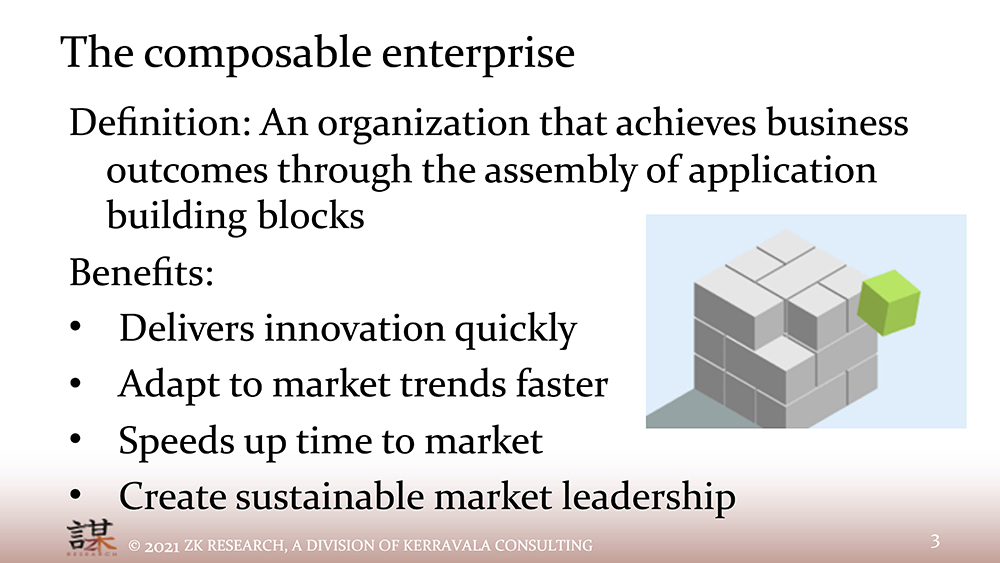In the enterprise world, it can take weeks or months for developers to automate an important business process, such as handling an insurance claim or admitting a patient to a hospital. But organizations today need to build faster and “lighter” workflows with composable solutions that use application building blocks.
“We live in a world where business agility is everything,” said Zeus Kerravala, principal analyst, ZK Research. “Companies need to adapt to market shifts faster than the competition by making the best decisions in the shortest possible time.”
Kerravala was the featured speaker at an Enterprise Connect August 25 webinar, “How to Transform Your Organization to an Event-Driven and Composable Enterprise,” with Steve Wood, Slack’s vice president of product, developer platform, and host Eric Krapf, general manager, Enterprise Connect.

Cleaning up the clutter
Composable solutions can boost productivity throughout an organization. “Studies indicate that users spend as much as 40 percent of their time simply managing work,” said Kerravala. For instance, if you get alerts all day from your SMS and social media applications, emails and voice messages, you can appreciate the value of bringing them together in one combined workflow.
“While composability is new to the communications space, it is a recognized approach to application development that allows you to put together custom workflows for your team and your users,” Kerravala said. Composability tools include low- or no-code apps that can be created by line-of-business managers, APIs that provide an interface with various workflows, and templates that provide a set of common components to build workflows.
Along with boosting productivity, the potential benefits of composability include providing more personalized experiences to your customers, delivering innovative products and services more quickly, and creating sustainable market leadership, said Kerravala.
“Assess the current landscape, and build a roadmap to modernizing your existing apps through composability,” Kerravala said. “Remember, a business is only as agile as its least agile component, so don’t be held back by older, monolithic apps.”

Automating high-value workflows
If you’re wondering where to start a composability strategy, focus on the valuable events in your organization, said Wood. For instance, an immediate response to a sales lead might allow you to close the deal ahead of the competition. “Look at the apps involved in the process that leads to those revenue-generating outcomes,” he added. It’s a different focus than simply automating boring repetitive tasks.”
However, composability can also help users intervene in an automated business process, when necessary. Wood cited the example of a pharmacy’s refrigerator, which would be programmed to maintain a constant temperature for medications, and send an alert in the event of a power outage or mechanical failure.
“We need to embrace a model of event-driven architecture that is better equipped to turn noise into productivity,” Wood said. “A top-down approach to determining what is important takes too long. Slack gives you automation tools you can use today to help you manage situations right now. As events come in from your apps, you decide how they should be handled. The goal is to empower end users to take control so they can get back to a productive work.”


